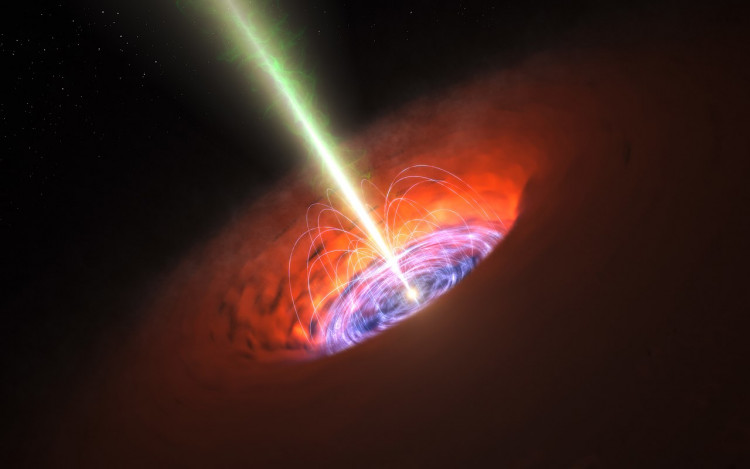Astronomers may have done the seemingly impossible and discovered a traveling black hole for the first time.
Scientists have found what could be a neutron star or a roving lone wolf of a black hole wrapped in the inexorable strength of its own gravity. This was accomplished for the first time by studying how the same force distorts the light from a more distant star, a process known as gravitational microlensing.
"This is the first free-floating black hole or neutron star discovered with gravitational microlensing," University of California, Berkeley, astronomy professor Jessica Lu, said in a statement. "With microlensing, we're able to probe these lonely, compact objects and weigh them. I think we have opened a new window onto these dark objects, which can't be seen any other way."
By definition, black holes are invisible because not even light can escape their powerful gravitational pull. For the first time in recent years, the worldwide partnership behind the Event Horizon Telescope was able to picture black holes. When we look at these photographs, however, the light we perceive is actually a disk of hot gas and material ringing the black hole's edge.
Black holes are sometimes visible because one or more stars orbit them, as with the supermassive black hole at the center of the Milky Way. However, astronomers believe that hundreds of millions of black holes are circling the galaxy in more remote areas.
Lu was part of one of two teams that examined the same data from the Hubble Space Telescope's microlensing event. Their research has been accepted for publication in the next issue of The Astrophysical Journal Letters.
Whatever it is, the object is known as MOA-2011-BLG-191 and OGLE-2011-BLG-0462 (OB110462, for short) and is about 5,000 light-years away from Earth, so there's little chance of it approaching us anytime soon.
The question over what kind of cosmic entity is twisting the light from stars behind it may be resolved shortly. In the second half of 2022, the Hubble Space Telescope will conduct additional observations and acquire additional data about the object.
Another team from Baltimore's Space Telescope Science Institute computed a slightly different mass for the object and determined with greater certainty that it is a black hole. The Astrophysical Journal will publish that paper.
Determining the number of these compact objects in the Milky Way galaxy will help astronomers better understand the evolution of stars and our galaxy, as well as whether any of the unseen black holes are primordial black holes, which some cosmologists believe were produced in large numbers during the Big Bang.



